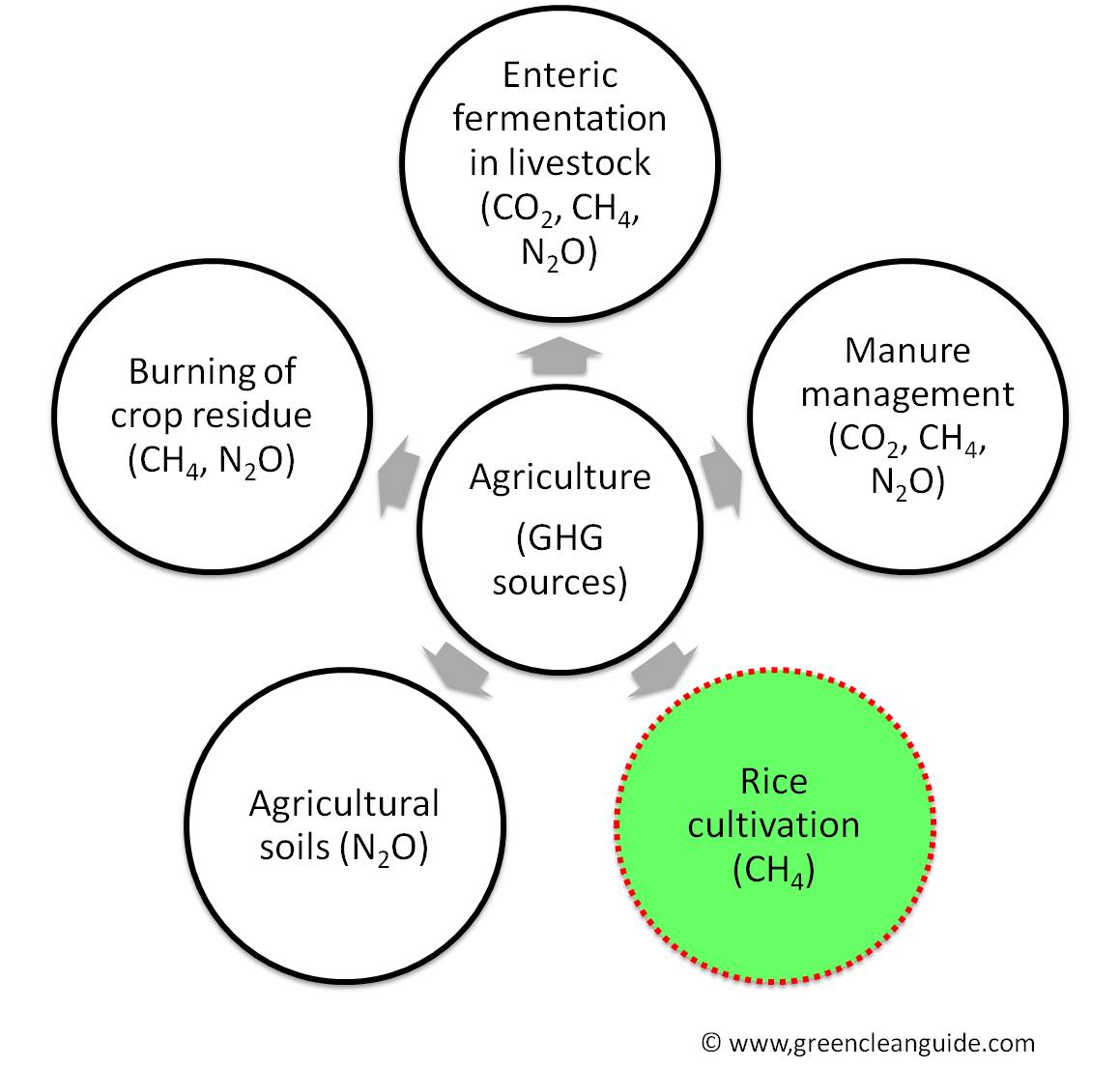Green House Gas emissions from Indian rice fields
 A paddy field is a flooded parcel of arable land used for growing rice. Rice is one of the major food grains and has a very crucial role in providing food for the evergrowing population. India is the largest rice growing country with around 43 million ha of land area under rice cultivation and produces around 125 million tonnes of rice. Rice contributes over 43% to the nation’s food grain production (FAO). On the other side, rice paddy field contributes in Green House Gas emissions mainly releasing Methane which is one of the potent green house gases.
A paddy field is a flooded parcel of arable land used for growing rice. Rice is one of the major food grains and has a very crucial role in providing food for the evergrowing population. India is the largest rice growing country with around 43 million ha of land area under rice cultivation and produces around 125 million tonnes of rice. Rice contributes over 43% to the nation’s food grain production (FAO). On the other side, rice paddy field contributes in Green House Gas emissions mainly releasing Methane which is one of the potent green house gases.
Due to its variant geographical location of cultivation, the rates of methane emission may vary in different areas. Variation in Temperate, Water depth, Season, Soil conditions, etc. can all result in big regional variations in GHG emission. However, methane emission from worldwide rice paddy fields has been well studied and reliable estimates of global GHG emissions from rice paddy fields now exist.
IPCC 4th Assessment Report, Chapter 8 Agriculture stats for GHG emission contribution from rice paddy fields;
- Agriculture accounts for 10‐12% of total global anthropogenic GHG emissions
- Agriculture accounts for 50% of methane emissions
- Rice production accounts for 11%
- South and East Asia accounts for 82% of total methane emissions from rice production of total non‐ CO2 emissions from agriculture.
 Indian scenario
Indian scenario
- In 2007, the agriculture sector emitted 334.41 million tons of CO2 equivalents. Estimated categories are enteric fermentation in livestock, manure management, rice paddy cultivation, agricultural soils and burning of crop residue.
- Rice cultivation emitted 3.33 million tons of CH4 (69.87 million tons of CO2 equivalents). This emission cover all forms of water management practiced in the country for rice cultivation such as irrigated, rainfed, deep water and upland rice.
There are a lot of opportunities in GHG mitigation from rice fields such as altering water management with mid‐season aeration, improving organic matter management e.g. composting and promoting aerobic decomposition of crop residues, improving N fertilizer application to match with crop demand, appropriate management of animal wastes and manure, minimum tillage, by rotation including cover crops. The above studies by IPCC, MoEF and many other organizations shows GHG emission from rice fields is in considerable amount contributing to climate change and hence it provides a lot of GHG mitigation opportunities.
Know more about;
Methane emission from waste water treatment plants can earn carbon revenue
Analysis of CDM projects in Indian agriculture sector
Reference and further Reading;
1) IPCC
2) India: Greenhouse Gas Emissions 2007

